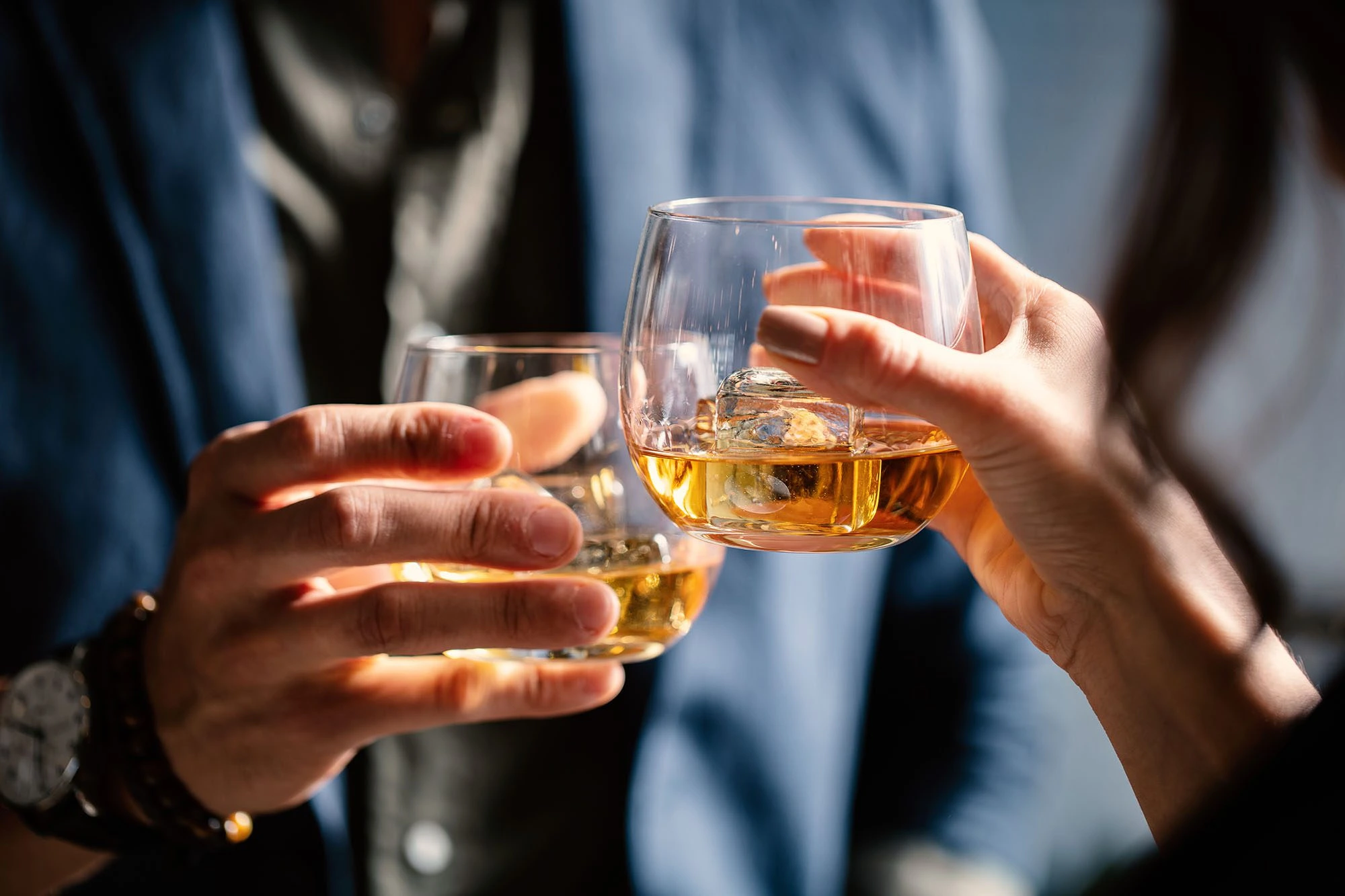Understanding Alcohol Cravings
The influence of alcohol cravings on individuals who are struggling with alcohol use disorder (AUD), as well as those who are in recovery, can be severe and may represent a considerable barrier to maintaining sobriety.

In this article, we'll look into the causes of alcohol cravings, trying to identify the biological, psychological, and environmental factors that may lead to their forming. Additionally, we'll discuss successful strategies to deal with these to remain sober for an extended time.
What are Alcohol Cravings?
Alcohol cravings can be best described as powerful and sometimes uncontrollable urges to drink alcohol. It is frequently observed among people who have developed alcohol dependence or are long-time users.
Physically, the cravings for alcohol are likely to present symptoms such as restlessness, sweating, shaking, increased heartbeat, and just a general feeling of uneasiness or discomfort. Psychologically, cravings provoke solid emotions and intrusive thoughts, making it harder to focus on something else.
These cravings are usually time-limited. Lasting 15-20 minutes on average and are more frequent in the early stages of recovery.
Cravings can occur spontaneously or elicited by internal or external stimuli, known as cues. Internal cues may include emotional states, like anxiety or symptoms of acute alcohol withdrawal. External cues may include exposure to alcohol-related environments or objects, like bottles of alcoholic beverages or advertisements.
What causes Alcohol Cravings?
Alcohol cravings are not just a simple desire for drinks. They deal with the complex interplay between biological, genetic, psychological, and environmental components.
1. Biological and genetic factors
Of all the factors, brain chemistry is the most significant one. Drinking alcohol interferes with levels of neurotransmitters, particularly dopamine, which is associated with pleasure and reward. The brain’s reward system is affected, leading to a pleasurable sensation every time you drink, getting used to this feeling, and can succumb to dependence on alcohol to release dopamine, which means cravings when alcohol is not available.
This makes a loop where the brain connects alcohol to pleasure and restlessly anticipates the alcohol.
Apart from affecting the levels of dopamine, the intake of alcohol can also alter the level of neurotransmitters such as serotonin and GABA, which act to regulate emotions.
Another factor is genetics. Thus, certain people might be genetically predisposed to easily developing alcohol cravings. For instance, a person may have a family history of alcoholism or a gene that increases the risk of developing an addiction.
2. Psychological factors
In the same way, stress and emotional triggers could also bring about these cravings. Lots of people lean on the bottle to find relief from stress, anxiety, or other negative feelings. This may instill an alcohol dependence to manage such feelings, which could create more cravings when in similar situations.
3. Environmental cues
Seeing ads for alcohol, passing by a bar, and being among friends, relatives, or even acquaintances who are drinking can create a deep craving to join them and drink. Social pressure, peer influence, or the fear of being left out may be the source of cravings.
4. Learned behaviors
If a person has established a routine of having a drink after work every evening, the end of the workday might spark the urge for an alcoholic drink. Such habituated reactions are potent and often hard to overcome.
How Can I Manage Alcohol Cravings?
The most important step for managing cravings is to identify your triggers, which are different for each person and, as stated previously, can be external or internal.
Take some time and have a close look at the situations, emotions, or people that might be a cause for your alcohol cravings. Pay attention to the moments that usually result in the strongest urges to consume alcohol. This self-awareness is going to help you narrow down your specific triggers.
Once you know your triggers, you can develop a plan to avoid them. This could mean:
- You purposely attend fewer social events.
- Distancing yourself from those associates or scenarios that cause you to want to drink.
- Decide to keep alcohol out of your home.
- Attending only alcohol-free restaurants.
Modifying and creating a surrounding that helps you overcome the temptation is a great way to prevent cravings.
But once you start experiencing cravings, it's critical to acknowledge them, remind you that they are temporary, usually 10 minutes or less, and then redirect your focus and concentrate on other things instead of the craving.
Distraction has proven to be one of the most effective ways to cope with alcohol cravings. You can try activities such as:
- Going for a walk.
- Calling a family member or friend.
- Listening to your favorite music or podcast.
- Reading a book.
- Taking a bath.
- Making a cup of tea or snack.
- Watching a movie or TV show.
More long-term strategies to manage and reduce the frequency and intensity of cravings involve incorporating:
Like Deep breathing exercises, meditation, or yoga, mindfulness techniques can help you see your cravings without judging yourself. This allows you to feel them but not be overwhelmed by them. Do not give in to the impulsive reaction; rather, observe the cravings as if they are thoughts and emotions that will disappear.
-
Engage in Daily Physical Activity
Participating in regular exercises, such as jogging, swimming, or dancing, can boost your mood and release endorphins, which helps reduce cravings.
-
Hobbies or Creative Outlets
This could be playing a musical instrument, gardening, cooking, journaling, or any other creative pursuit that you may embrace to redirect your energy into something good.
-
Practice Mindful Eating
To do this, let yourself feel each mouthful's flavors, textures, and sensations, thus experiencing the nourishment and fulfillment that food can bring you.
-
Joining Support groups
Alcoholics Anonymous (AA), and SMART Recovery, can provide a safe space and a sense of community, so you can share your struggles, seek advice, and find support.
Get Professional Help
If you feel like you can’t deal with cravings alone, there’s no shame in asking for help. A combination of medications and therapies can offer great benefits.
Several medications can help when cravings are too intense or severe. These medications are effective since they specifically block or inhibit the pathways in the brain that are involved in alcohol dependence and cravings.
- Naltrexone works by reducing the reinforcing effects alcohol has on our system by blocking opioid receptors in the brain, thus weakening the desire to drink and diminishing cravings.
- Acamprosate helps in the regulation of the signaling mechanisms that are out of balance in the brain after long-term alcohol abuse. It can also assist in reducing cravings and withdrawal symptoms by regulating glutamate.
- Disulfiram decreases the desire to drink by causing adverse physical symptoms when a person drinks alcohol. This causes flushing, headaches, nausea, and rapid heartbeat. Thus, by provoking this unpleasant sensation, it helps people to stick to their decisions and stay away from alcohol.
- Topiramate has also proved effective in reducing alcohol cravings. It acts by modulating several neurotransmitter systems, including GABA, and glutamate, which are instrumental in alcohol addiction.
Keep in mind that using medications only is not the best approach to the treatment of alcohol cravings or alcohol use disorders. The medicines should be part of a comprehensive treatment plan comprising support groups, behavioral therapies, and lifestyle changes. To find the most appropriate drug, dosage, and length of treatment time, it is necessary to seek help from a healthcare professional.
-
Therapy and Counseling
Behavioral therapies are a key part of the strategy for control of alcohol cravings and assist people in their endeavors to either reduce or quit alcohol drinking. These therapies are devoted to recognizing and modifying the cognitive, behavioral, and thought patterns of people who drink alcohol. They empower people with coping mechanisms to overcome cravings and healthy living skills.
Some examples of these therapies are:
- Cognitive-behavioral therapy (CBT)
- Motivational Enhancement Therapy (ME)
- Contingency Management (CM)
- Dialectical Behavior Therapy (DBT)
- 12-Step Facilitation Therapy
- Family Therapy
The effectiveness of behavioral therapies could be different according to the individual situation and wishes. Working with a qualified therapist or counselor specializing in addiction treatment will be advantageous in helping you decide the most appropriate therapy and providing ongoing support.
Final thoughts…
Keep in mind that alcohol cravings are a normal part of recovery, and managing them calls for patience, persistence, and resolve to make healthy life choices. What may be helpful for one person might not be for another. Being open to finding strategies most suitable for your case is, therefore, very important. Keep moving forward in the recovery process, and know that you are not alone.







